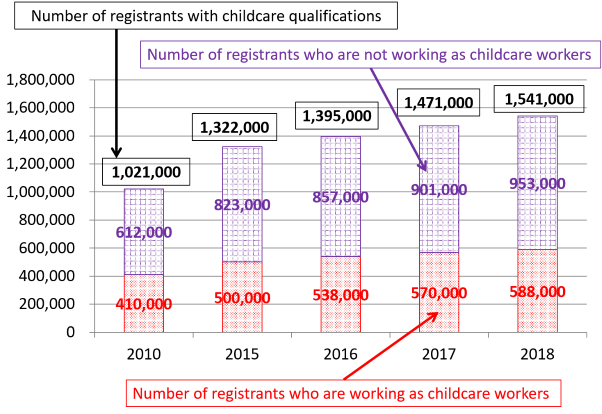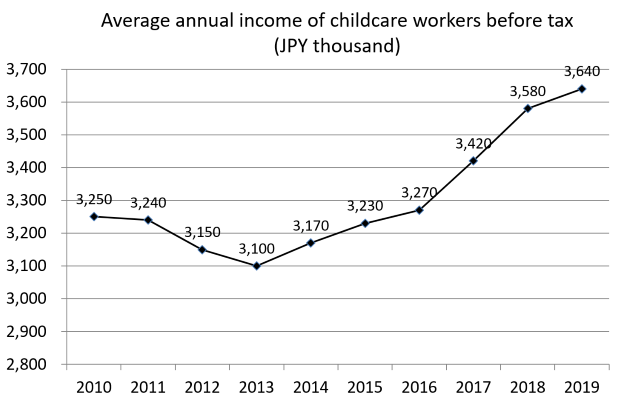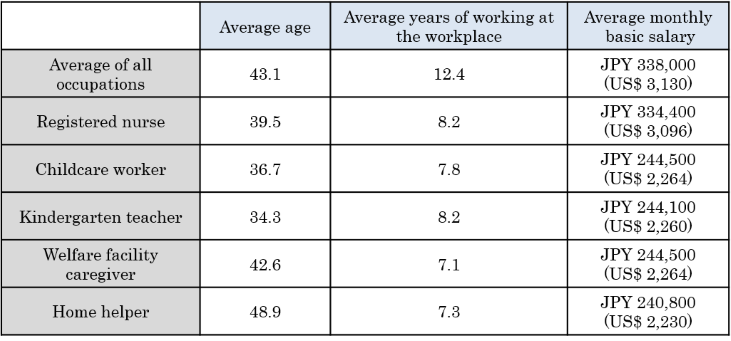Column Finance and the Social Security System 2020.08.25
【Aging, safety net and fiscal crisis in Japan】No.267: The shortage of childcare workers continues
In this column series, Yukihiro Matsuyama, Research Director at CIGS introduces the latest information about aging, safety net and fiscal crisis in Japan with data of international comparison.
As explained in Columns 117 and 202, the shortage of nursery facilities has become a major political issue. One reason for this is that it is difficult to secure childcare workers. Although the number of registered people with childcare qualifications increased from 1,021,000 in 2010 to 1,541,000 in 2018 (Figure 1), 953,000 of them did not work as childcare workers.
One of the reasons why many qualified people choose to not work in childcare is the low salary. To tackle this, the government decided to provide subsidies to raise the salary of childcare workers. As a result, the average annual income of childcare workers increased from JPY 3,100,000 (US$ 28,704) in 2013 to JPY 3,640,000 (US$ 33,704) in 2018 (figure 2). Table 1 compares the monthly basic salary of childcare workers in 2019 with those of other occupations. This reveals that the basic salary (JPY 244,500) is 28% lower than the average of all occupations (JPY 338,000), but is at the same level as kindergarten teachers and welfare facility caregivers and higher than home helpers.
Figure 1: Number of registrants with childcare qualifications

Source: Ministry of Health, Labor and Welfare
Figure 2: Average annual income of childcare workers

Source: Ministry of Health, Labor and Welfare
Table 1: Average monthly basic salary by job (in 2019)

Note: The conversion rate is US$ 1 = JPY 108
Source: Ministry of Health, Labor and Welfare
